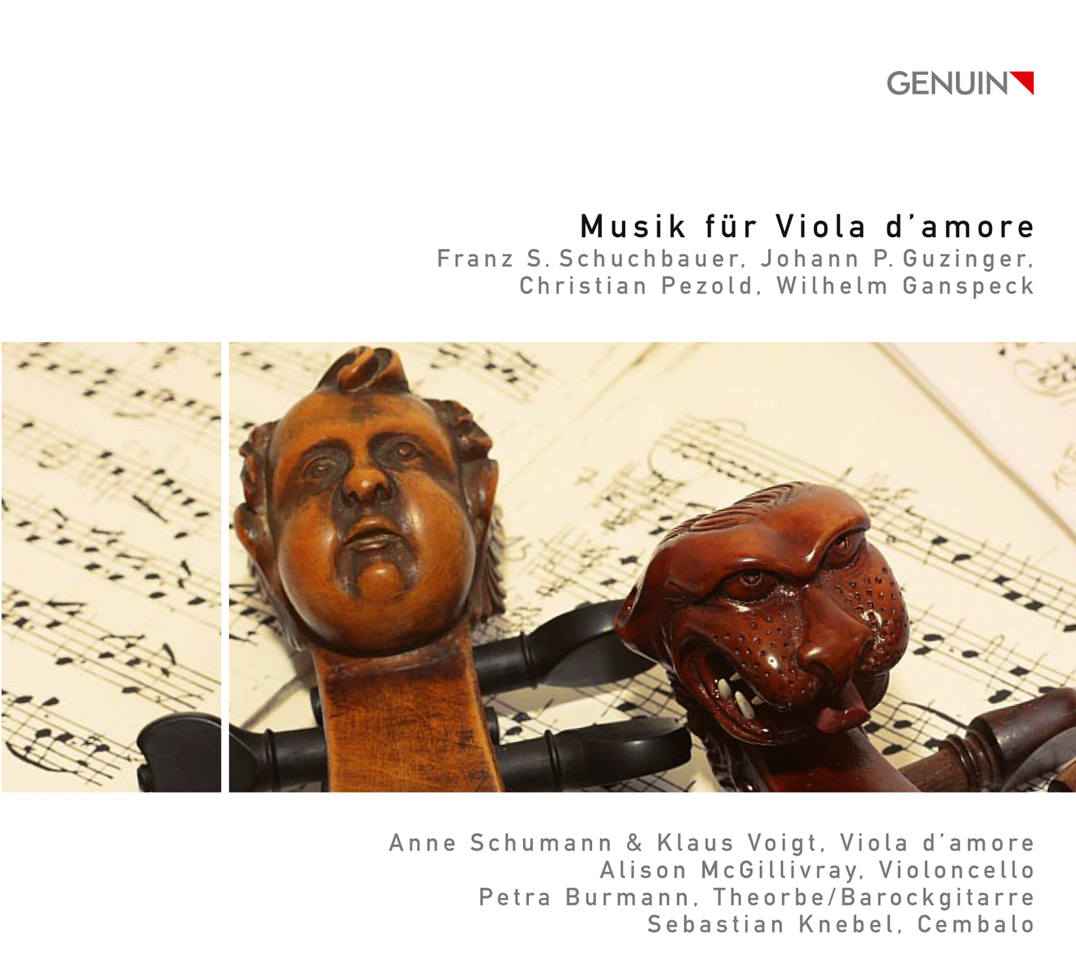[GEN 10183]
Simply put, the viola d’amore is a violin whose strings are underlaid by a set of resonating metal strings: when the bow is drawn across the main strings, these subsidiary strings are set in sympathetic motion, producing the characteristic silvery, glistening sound of the instrument. In the ‘age of the viola d’amore’ – from about 1680 to 1800 – this sound was highly prized: its yearning, aching quality provided an exact expression of the ‘naked, inflamed, fluttering heart’ of the ‘age of feeling’. This programme gathers ‘divertissements’ from southern Germany, largely from the collection of the Dresden concert master Georg Pisendel. As Anne Schumann writes, the viola d’amore is not an instrument for a virtuoso: it is for somebody who loves sound.
The music
Franz Simon Schuchbacher (d. 1743), Trio in A major for two violas d’amore
Johann Peter Guzinger (1683–1773), Suite in A major for viola d’amore and basso continuo
Anonymous (first half of the eighteenth century), Trio in D major for two violas d’amore and basso continuo
Anonymous (first half of the eighteenth century), Trio in A major for two violas d’amore and basso continuo
Christian Pezold (1677–1733), Partita in A major for viola d’amore
Wilhelm Ganspeck (1687–1770), Overture in A major for two violas d’amore and basso continuo
The musicians
Anne Schumann violin
Klaus Voigt viola d’amore
Alison McGillivray cello
Petra Burmann theorbo / baroque guitar
Sebastian Knebel harpsichord
Anne Schumann can also be heard on the CD Rosenkranzsonaten I and on some of the Bach Players’ CDs that we publish.
Recording & production
Produced by Michael Silberhorn
Edited & mastered by Michael Silberhorn with Piotr Furmanczyksp
Recorded in the Refektorium of Kloster Michaelstein, Blankenburg, 15 to 18 February 2010
Presentation
All the CD booklet texts are given in German and English. These consist of an essay by Manfred Fechner introducing the music, and notes on the viola d’amore by Anne Schumann and Klaus Voigt.
Reviews
The performances are first class. The sound of the viole d’amore is intriguing and indeed sweet like all the historical sources say. The ensemble is immaculate and the two viole d’amore blend perfectly. The rhythms of the dance movements are very clearly exposed, also thanks to the contributions of the basso continuo section. This is simply a wonderful and compelling disc with fine music in equally fine interpretations.
Johan van Veen, Musica Dei Donum, July 2011
